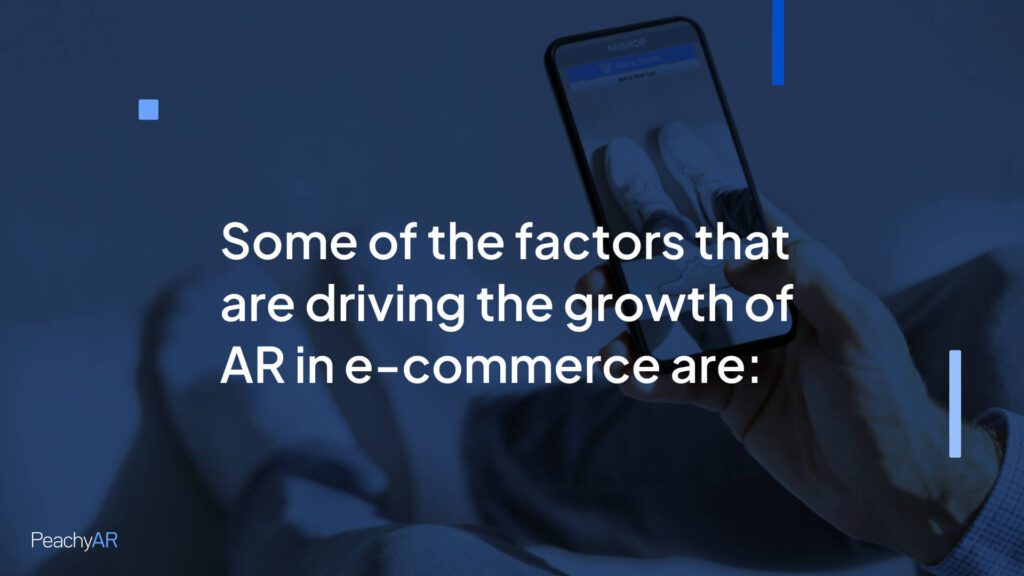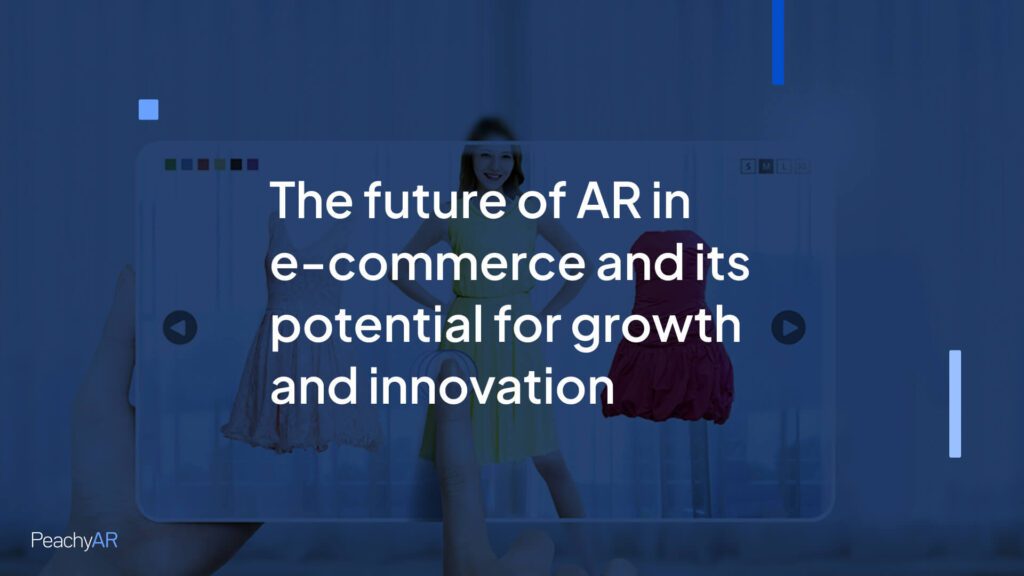Augmented Reality In E-Commerce: Augmented Reality (AR) is a technology that overlays digital information in the real world, creating an immersive and interactive user experience. AR has been used for various purposes, such as gaming, education, entertainment, and marketing. However, one of the most promising applications of AR is in the field of online shopping. (What is AR technology?)
Online shopping has many advantages, including convenience, variety, and lower prices. However, it also has some drawbacks, such as the inability to see, touch, or try on the products before buying them. This can lead to customer dissatisfaction, returns, or abandoned carts. AR can help solve these problems by providing customers with a more realistic and engaging online shopping method.
AR can enhance the online shopping experience for customers in several ways:
- AR can allow customers to visualize how the products would look in their environment, such as how a piece of furniture would fit in their living room, how a painting would match their wall color, or how a plant would grow in their garden.
- AR can enable customers to try on the products virtually, such as how a clothing item would fit their body shape, how a pair of glasses would suit their face, or how a makeup product would blend with their skin tone.
- AR can offer customers more information and guidance about the products, such as how to use them, their features, or what reviews they received from other customers.
- AR can create a more fun and interactive shopping experience for customers, such as allowing them to customize the products according to their preferences, play games or quizzes related to the products, or share their shopping experience with their friends on social media.
By using AR, online retailers can provide customers with a more satisfying and memorable shopping experience, increasing customer loyalty, retention, and conversion. AR can also help online retailers differentiate themselves from their competitors and attract new customers looking for innovative and convenient online shopping.
AR is not a futuristic technology that is only available for a few. It is already here and accessible to anyone with a smartphone or a tablet. Many examples of online retailers have successfully implemented AR in their platforms, such as IKEA, Sephora, Amazon, and Snapchat. These retailers have reported positive results from using AR, such as higher customer engagement, lower return rates, and higher sales.
AR is not only a technology that can enhance the online shopping experience for customers. It is also a technology that can transform the online shopping industry and create new opportunities for growth and innovation. AR is here to stay; it is time for online retailers to embrace it and leverage its potential.
Augmented reality (AR) is a technology that overlays digital information onto the physical world, creating an immersive and interactive user experience. AR has been used for various purposes, such as gaming, education, entertainment, and marketing. However, one of the most promising applications of AR is in e-commerce, where it can enhance the online shopping experience and increase customer satisfaction and loyalty.
AR for e-commerce can provide several benefits for both customers and retailers. For customers, AR can help them visualize how products would look or fit in their environment, such as trying on clothes, accessories, or makeup or placing furniture, appliances, or artwork in their homes. This can reduce the uncertainty and hesitation often accompanying online purchases and increase the confidence and trust in the products and brands. AR can also create a more engaging and personalized shopping experience, where customers can realistically interact with products, customize them according to their preferences, and receive recommendations based on their behavior and feedback.
For retailers, AR can help them showcase their products more attractively and innovatively and differentiate themselves from competitors. AR can also increase the conversion rate and reduce the return rate of online purchases, as customers are more likely to buy products that they have seen and tried in AR and less likely to return them due to mismatched expectations or dissatisfaction. Moreover, AR can help retailers collect valuable data on customer behavior, preferences, and feedback, which can be used to improve their products, services, and marketing strategies.
The market for AR in e-commerce is expected to grow rapidly in the coming years as more customers demand a better online shopping experience and more retailers adopt AR as a competitive advantage. According to a report by Grand View Research, the global AR market size was valued at USD 17.67 billion in 2020 and is expected to grow at a compound annual growth rate (CAGR) of 43.8% from 2021 to 2028. The report also states that the e-commerce segment accounted for the largest share of the AR market in 2020 and is expected to maintain its dominance throughout the forecast period.

Some of the factors that are driving the growth of AR in e-commerce are:
- Smartphones and tablets are the primary devices for accessing AR applications, and their penetration is increasing.
- Improving AR technologies, such as computer vision, image recognition, depth sensing, and 3D rendering, enables more realistic and accurate AR experiences.
- The emergence of 5G networks provides faster and more reliable data transmission and lower latency for AR applications.
- The impact of the COVID-19 pandemic has accelerated the shift to online shopping and increased the demand for contactless and immersive shopping experiences.
Some of the challenges that are hindering the growth of AR in e-commerce are:
- The high cost of developing and maintaining AR applications may limit their adoption by small- and medium-sized retailers.
- The lack of standardization and regulation of AR technologies may raise privacy, security, quality, and compatibility issues.
- There is limited awareness and acceptance of AR among some customers and retailers, who may be unfamiliar with or skeptical about its benefits and usability.

The future of Augmented Reality in e-commerce and its potential for growth and innovation
Despite these challenges, AR has a huge potential to transform the e-commerce industry and create new opportunities for growth and innovation. Some of the trends that are shaping the future of AR in e-commerce are:
- Integrating AR with other technologies, such as artificial intelligence (AI), blockchain, cloud computing, the Internet of Things (IoT), and social media, can enhance the functionality and value of AR applications.
- The development of web-based AR platforms can enable customers to access AR applications without downloading any apps or software.
- The expansion of AR applications to new product categories and domains, such as food delivery, healthcare, education, tourism, entertainment, and social networking.
- The emergence of new business models and strategies based on AR, like subscription-based services.
How PeachyAR Can Revolutionize Your E-commerce Business
Do you want to boost your sales, conversions, and customer loyalty with PeachyAR?
PeachyAR is the ultimate platform for e-commerce AR. With PeachyAR, you can easily design, upload, and manage AR content without coding or technical skills.
PeachyAR works with hundreds of online retailers so you can find the best deals and the latest trends. The best part is that you can sign up for a free trial today and get unlimited access to all the features for 14 days. Don’t miss this opportunity to transform your online shopping experience with PeachyAR. Sign up for your free trial now and discover the power of augmented reality.






2 Responses